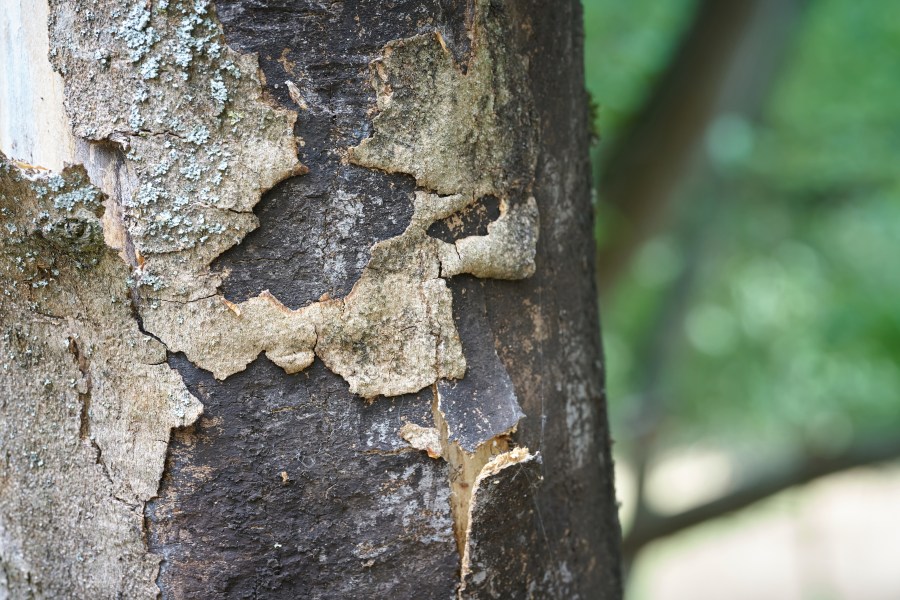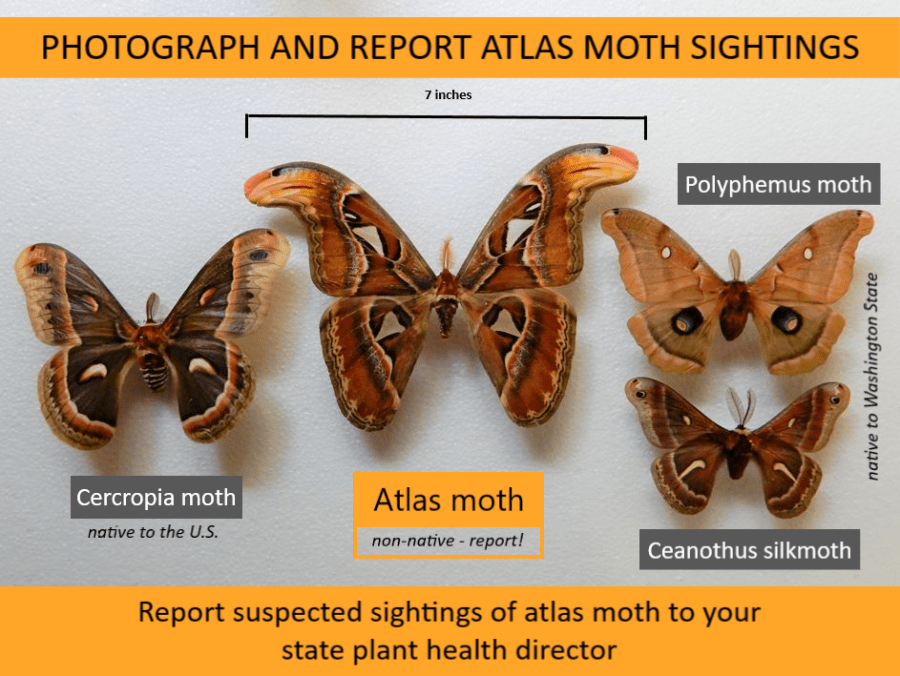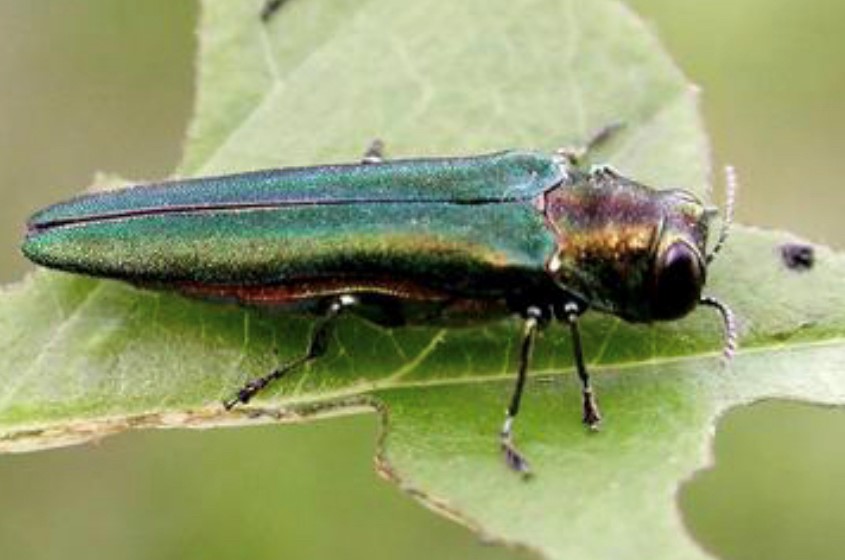PORTLAND, Ore. (KOIN) – Recent sightings of invasive species and a tree disease in and near Washington have state officials asking the public to keep their eyes open and report anything that seems out of the ordinary.
Three things in particular have the Washington State Department of Natural Resources on high alert: sooty bark disease, the Atlas moth and the emerald ash borer.

In July, a Washington State researcher found evidence of sooty bark disease while walking his dog through a Tacoma park. The disease was attacking maple trees and can be harmful to humans.
Sooty bark disease comes from a fungus that has existed in the Pacific Northwest for some time, but researchers at Washington State University say it’s become more of a threat as the climate becomes hotter. Cooler conditions help control the fungus’ population and help trees fend it off.
Infected trees can give off large amounts of airborne spores that can be dangerous if inhaled, according to the Washington State Department of Health. The disease primarily infects maple trees and causes leaves to wilt and branges to die back.
State officials are also asking for the public’s help watching for the world’s largest moth, which was just spotted in Bellevue in July.

The Atlas moth has a wingspan of up to almost 10 inches and is typically found in tropical areas. It is a federally quarantined pest, which means it is illegal to obtain, harbor, rear, or sell live moths as adults, eggs, larvae or pupae without a permit from the U.S. Department of Agriculture.
Little is known about the moth, but this is believed this is the first time it’s been detected in the United States. Entomologists believe its host plants include apple and cherry trees.
WSDA says it doesn’t know if the one seen in Washington is a one-off escapee or part of a larger population and is asking people to report any sightings.
Another invasive species of concern is the emerald ash borer, which was discovered in Forest Grove, Ore. on June 30. This is the first time the pest has been seen in a West Coast state and Washington state officials are prepared for it to possibly move north.
The emerald ash borer is considered the most destructive forest pest in North America. It is native to Asia and was first detected in the United States in Michigan in 2002. In the two decades since then, it’s spread to 35 states, leaving a trail of destruction wherever it goes. They have killed up to 99% of the ash trees in some North American locations.

Other invasive species the public is asked to watch for:
Asian Longhorned Beetle – This is a wood-boring beetle that attacks many hardwood trees, including maples, birches and willows. The insect feeds inside trees during its larval stage and then chews its way out as an adult. There has not been a confirmed sighting in Washington.
Asian Spongy Moth – These insects were once known as the Asian gypsy moth. They lay dark brown egg masses on everything from tree trunks to lawn furniture. The insects can completely defoliate trees during their larval state. WSDA conducts annual surveys for the spongy moth.
Spotted Lanternfly – This insect has black spots on pinkish wings that can be seen when it isn’t flying. It feeds on sap from many tree species, including fruit trees like apples, cherries, grapes and plums. It also feeds on hops. The spotted lanternfly has not been confirmed to be in Washington. It was intercepted in California on commercial goods from the eastern United States. Dead specimens have been found in Oregon.
WSDNR asks people to inspect their backyard or local park for invasive insects and tree diseases.
“If you already exercise outdoors, walk your dog, or take your kids out to play, try adding a quick check of nearby trees for potential pests,” suggested Ben Thompson, Urban and Community Forestry Program manager for WSDNR. “With kids, you can even turn it into a game. Challenge them to see how many different insects they can find. Kids are great observers; insects also fascinate many children. The reporting app makes it easy to help them file a report.”
The app Thompson mentioned was created by the Washington Invasive Species Council. It allows people to photograph and geo-tag a location where they believe they saw an invasive species.
Anyone who doesn’t have the app can make a report online.
“If you spot and report a new, tree-killing invasive species, your report could prevent widespread and long-lasting costs and impacts,” said Justing Bush, executive coordinator of the Washington Invasive Species Council. “It’s up to everyone to keep the Evergreen State evergreen.”
